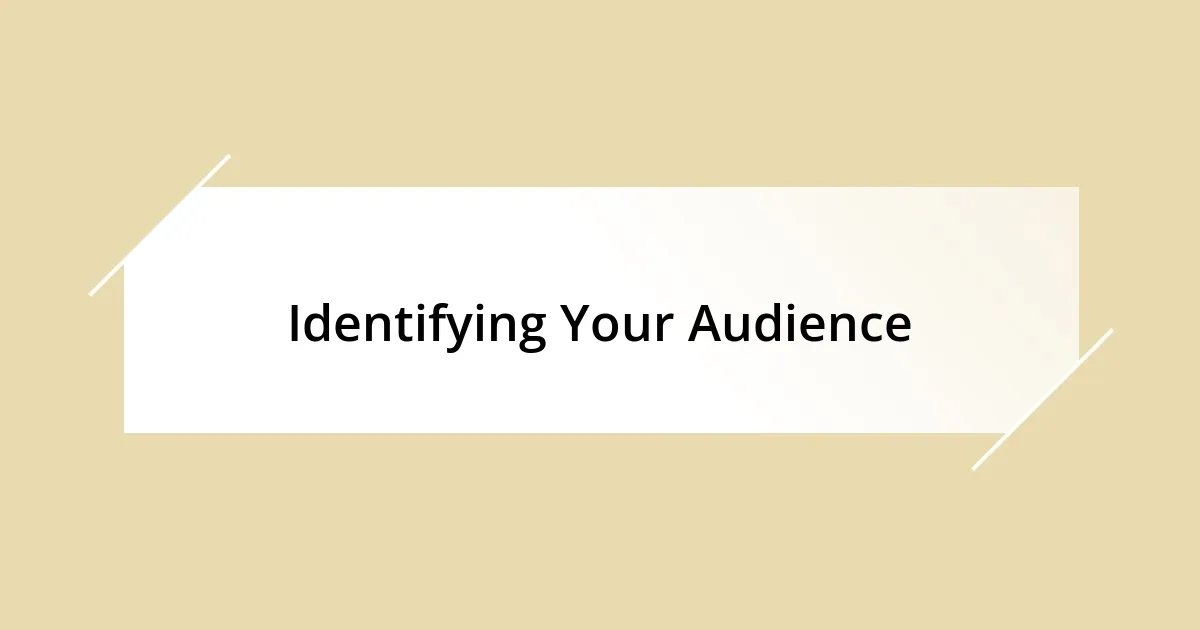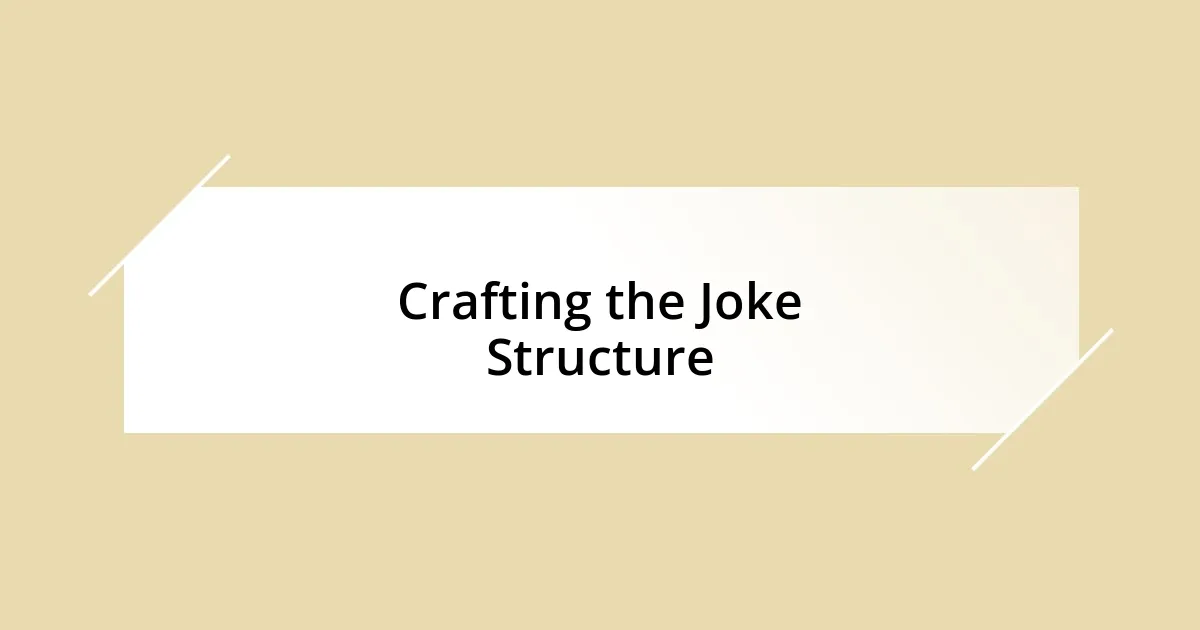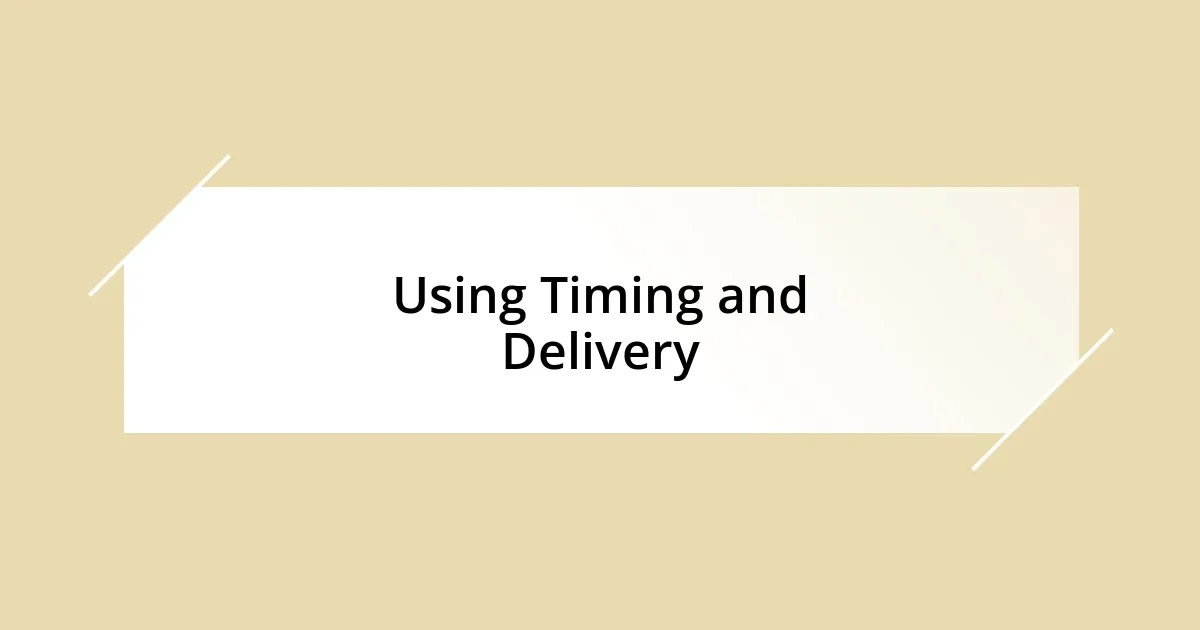Key takeaways:
- Understanding your audience’s demographics, political leanings, and emotional responses is crucial for crafting effective political humor.
- Researching current events actively provides a rich source of material for humor, allowing for timely and relatable jokes.
- Timing, delivery, and editing are essential elements in joke preparation, as they significantly impact the audience’s response and engagement.
- Testing jokes with different audiences helps gauge their reception and refine humor based on varied reactions.

Understanding Political Humor
Political humor often operates on multiple levels, deftly mixing facts with exaggerations. I remember the first time I heard a witty quip about a political scandal—it caught me off guard but also encouraged me to reflect on the absurdities of the situation. Isn’t it fascinating how a simple punchline can encapsulate complex issues, making them both accessible and relatable?
What strikes me about political jokes is their power to provoke thought while simultaneously entertaining. For instance, I’ve often seen a room full of people burst into laughter at a clever satire of a current event, yet moments later, they engage in serious discussions about the implications it raises. Have you ever noticed how humor can act as a catalyst for deeper conversations? It’s like peeling back layers of societal norms, revealing truths that can sometimes be uncomfortable.
It’s essential to understand the audience when crafting political humor. One time, I tried sharing a joke about a local policy change during a community meeting, which fell flat. The room’s mixed reactions made me realize that not everyone shares the same political lens, and that’s the key to making political humor resonate. So, how do you gauge what will land well? It often comes down to knowing the sentiments and backgrounds of those you’re sharing with, which can transform a simple joke into a powerful commentary.

Identifying Your Audience
Identifying your audience is crucial for effective political humor. I learned this the hard way when I attempted to tell a joke about economic reforms to a group of friends, all of whom had very different perspectives. Instead of laughter, I was met with silence and a few confused glances. It was a moment that taught me how essential it is to understand the political climate and sensitivities of my audience. You can’t just throw any joke out there; you need to consider who is listening.
I always think about the demographics and cultural backgrounds when crafting my jokes. For example, at a family gathering, a joke that pokes fun at a political party may score big among my cousins, but might leave my more conservative relatives feeling uncomfortable. The emotions and experiences of your audience can greatly influence their reception of humor, and that’s something I keep in mind. I often find myself tailoring jokes to fit the mood, ensuring they’re not only funny but also relatable.
Additionally, I’ve found focusing on common ground can pave the way for humor that resonates. At a recent community event, I opted for a light-hearted, universally relatable political observation rather than a pointed critique. The outcome? Laughter and a buzzing conversation afterward. It reminded me how humor can bridge divides, allowing people to laugh together instead of at each other. Understanding your audience can truly transform a good joke into a memorable moment.
| Audience Characteristics | Impact on Humor |
|---|---|
| Age Group | Different generations may have varying political insights; younger audiences might connect with memes, while older audiences prefer classic references. |
| Cultural Background | Cultural context can greatly influence how humor is perceived, with some jokes potentially being offensive to certain groups. |
| Political Leanings | Knowing whether your audience leans left, right, or center helps tailor the punchlines to ensure engagement without alienation. |
| Interpersonal Relations | Close friends might appreciate inside jokes, whereas acquaintances may favor safer, more general humor. |

Researching Current Events
Researching current events is vital when writing political jokes. I’ve always found that staying informed sets the foundation for great humor. When I scroll through news headlines, I often jot down quirky phrases or absurd scenarios that catch my attention. It’s a sort of treasure hunt, where each piece of information can spark a creative idea. The more I know, the better equipped I am to turn a serious situation into something laugh-out-loud funny.
When you’re diving into current events, here are a few tips that have worked for me:
- Follow multiple news sources: Different outlets can offer varied perspectives on the same story, which can help you find angles to play with.
- Keep an eye on social media trends: Platforms like Twitter and TikTok can be gold mines for finding what people are laughing about in real time.
- Stay curious and ask questions: I often think about why a news story matters and who it impacts—this deeper understanding can lead to sharper punchlines.
- Look out for absurdities: Sometimes, the most outrageous elements of a news story are what make the best jokes. It helps to highlight the ridiculousness we often overlook.
By being an active observer, you create a reservoir of material to draw from. I remember reading a headline about a politician’s bizarre gaffe that made me chuckle; I instantly crafted a play on words that got my friends laughing for days. It’s those moments of connection that remind me why I engage with the news—it’s the fuel for clever humor.

Crafting the Joke Structure
Crafting a solid joke structure is like building a bridge between the punchline and your audience. I’ve discovered that a classic setup-punchline format often works best. The setup creates an expectation, while the punchline flips it on its head. For instance, once, I told a joke that started with, “Why don’t politicians ever play hide and seek?” It was simple, but when I delivered the punchline— “Because good luck hiding when they can’t keep secrets!”—the laughter just rolled in. It’s all about that twist.
I’ve also learned the power of timing and pacing. When I’m delivering a joke, I pause briefly before the punchline, letting the audience anticipate the climax. It’s almost like building suspense in a good movie. I recall a time when I told a joke about a local politician messing up a public speech; the punchline hit harder because I let the silence linger just enough for the listeners to lean in. Isn’t it fascinating how much a little pause can amplify the humor?
Context is another crucial element in structuring a joke. I always try to relate the humor back to something familiar, whether it’s a recent event or a common experience. For example, I’d joke about how public transportation is like a politician’s promise—neither is trustworthy but at least one comes with a seatbelt. Tying relatable concepts to the punchline makes the humor feel more personal and relevant. When you hear laughter erupt, it feels rewarding, like you’ve struck a chord. It’s the magic of connection through comedy.

Using Timing and Delivery
Timing and delivery can make or break a political joke. I’ve found that a well-timed punchline feels like a sudden burst of fireworks. For instance, I once told a joke at a gathering right after a heated political debate: “If politicians were paid by how much they talked, we’d all be drowning in cash!” The laughter came just before the groans as everyone realized the accuracy of the statement. That split-second pause before delivering that punchline allowed the humor to land perfectly.
When I consider delivery, I often recall a time when I fumbled through a joke at a comedy night. My punchline came out too quickly, losing its impact. It taught me the importance of pacing—not just the time between words, but how I physically presented the joke. Leaning into the mic and engaging my audience with eye contact created an energy that made my next joke about a public official’s blunder feel electric. Isn’t it amazing how much your body language can enhance the wit in your words?
I’ve noticed that the emotional cadence of your voice adds to the joke’s effectiveness. If you deliver a punchline with enthusiasm, it often resonates deeper. I once shared a story about a local mayor who promised to fix the potholes—only to have them remain unresolved. By practically shouting, “Happy roads, happy votes!” I could feel the audience’s laughter build like a wave of relief. Engaging the audience emotionally through delivery not only amplifies your humor but also creates a memorable experience together. Who hasn’t chuckled together in moments of shared frustration?

Testing Your Jokes
Testing your jokes is an essential step that I never skip. After all, you want to know if your humor can land before sharing it with a bigger audience. I often run jokes by my friends, who provide invaluable feedback. Once, I tried out a quip about a popular figure’s notorious blunder, and their laughter confirmed it would hit well. But it’s not always smooth sailing; sometimes, the feedback is a polite chuckle, which signals I need to rethink the delivery or tweak the punchline.
I’ve discovered that different groups react in unique ways to the same joke. There was a moment I tested the same political joke with two different audiences—friends at a casual gathering and my parents during a family dinner. The friends roared with laughter, while my parents stared at me, slightly perplexed. This contrast taught me the importance of knowing your audience and adapting your jokes accordingly. The laughter of my friends felt like validation, but it also made me ponder—why did it fall flat for my parents? Understanding these nuances can guide you toward the perfect punchline.
A great approach to testing jokes is to pay attention to body language and facial expressions. I remember observing a friend’s reaction to a joke about political campaign promises; her eyes widened before bursting into laughter. That spark showed me I was onto something. It made me think: Are we more attuned to humor when it reveals deeper truths? In that moment, I realized that humor can challenge perspectives while simultaneously evoking joy. Engaging with these reactions can sharpen your craft, making sure that when you do take the stage, your jokes resonate beyond the punchline.

Refining and Editing Jokes
Editing jokes is a crucial part of the writing process that often gets overlooked. There was a time I had a clever joke about a politician’s speech that felt a bit too long. After trimming down the wording and tightening the punchline, it transformed from a chuckle to a full-blown laugh. It made me think: how often do we let unnecessary fluff cloud our humor? I’ve realized that every word matters; if it doesn’t serve the punchline, it’s best to let it go.
I also find that reading jokes aloud helps me catch awkward phrasing and pacing that might slip by on the page. I remember laboring over a joke about a controversial bill for what felt like hours, but once I read it out loud, it didn’t flow quite right. By adjusting the rhythm, I could feel the joke picking up speed and energy, almost like a dance. Isn’t it fascinating how the sound of our words can elevate the humor? A well-crafted joke should feel effortless, as if it just happened spontaneously.
Lastly, getting fresh perspectives can breathe new life into a joke. I once shared a draft with a fellow comedian, who suggested a slightly different angle that hadn’t occurred to me. The joke about a debate moderator suddenly became about political biases, resulting in a much sharper punchline. This experience reinforced the idea that collaboration can refine our humor. Who doesn’t love a good buddy check to polish their best material? Embracing feedback and new ideas can transform a mediocre joke into a standout moment.














